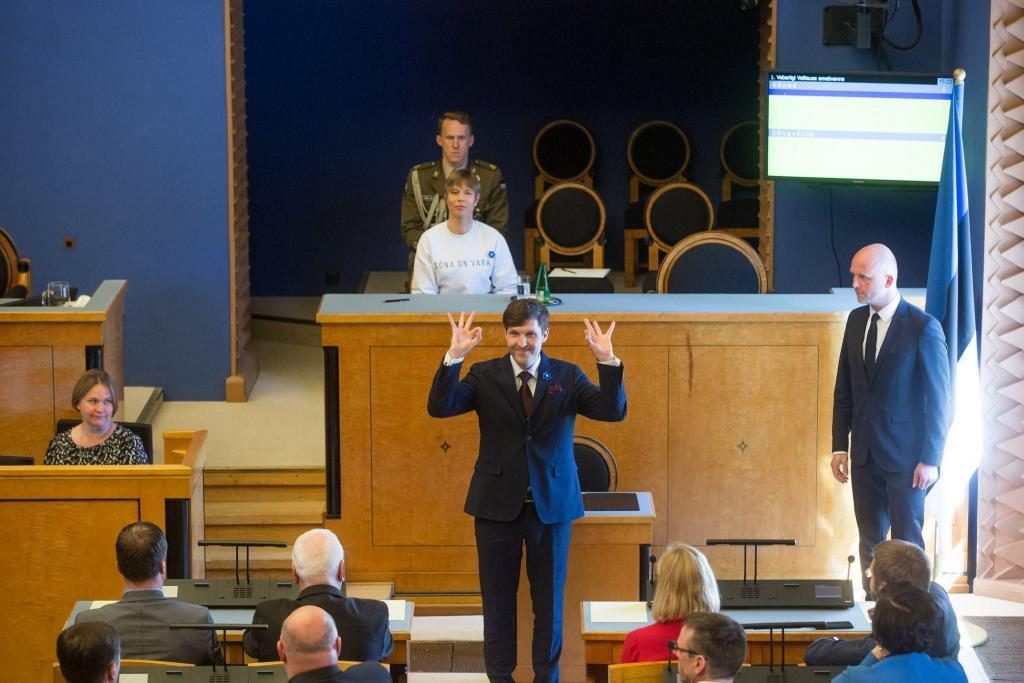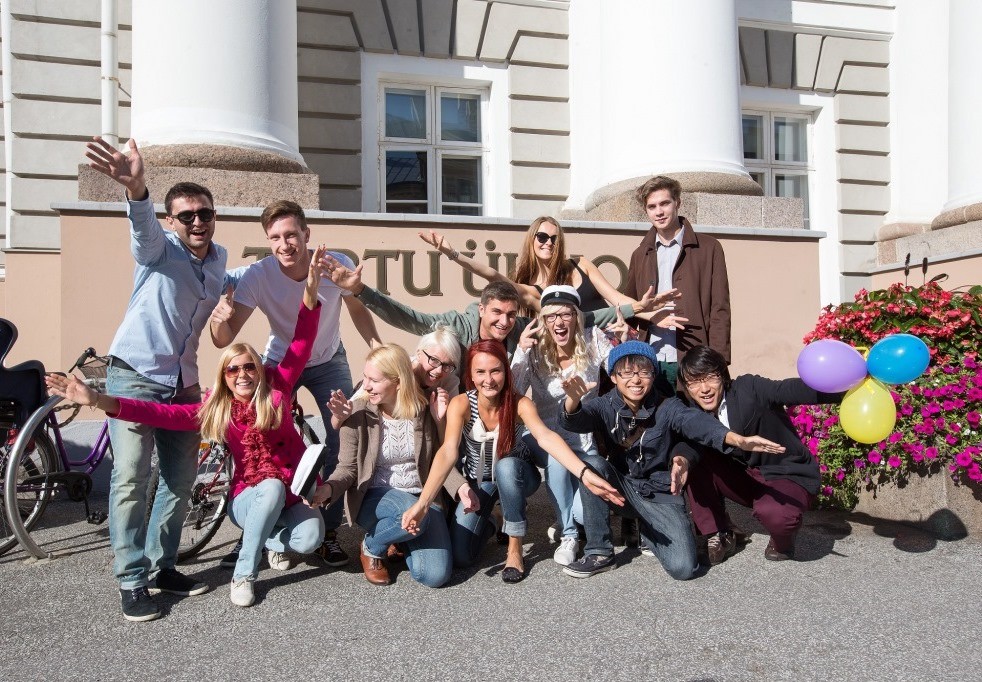The proposal by the far-right Estonian Conservative People’s Party – known as EKRE – to prevent young people from Ukraine, Georgia, Russia or another non-EU country from coming to study in Estonia might give credit to the populist party in the eyes of some voters, but it’s detrimental to the interests of Estonia, writes Aune Valk, the University of Tartu’s vice rector for academic affairs.
This is a lightly edited version of the article originally published on the University of Tartu web page.
This seems to be what politicians from the Estonian Conservative People’s Party have asked. As an answer, they have proposed a draft legislation aiming to prevent young people from Ukraine, Georgia, Russia or another non-EU country from coming here to study unless they pay for their studies.
The draft legislation turned up at the beginning of September, without any analysis or legislative intent, without notifying the parties concerned or coordinating the draft with them. If the thought that students from other countries must generally pay for their studies – which they do – is generally understandable, the prohibition of any opportunities for free studies does not conform to any other strategies or policies on labour market, immigration or higher education, and is harmful to the Estonian economy.
Who learns, for what money and how well?
First, some figures. This year, 495 international students started their studies at the first two levels of higher education at the University of Tartu. This figure has remained approximately the same as in 2018 and 2019. We will soon see how many of these students arrive in Estonia this autumn.
The time when the number of international students grew rapidly is over for several reasons. The university no longer actively opens English-taught curricula; we have reduced our admission numbers and offer less opportunities for tuition-free study. This year’s admissions, and first and foremost the students’ readiness to arrive here, were affected by the coronavirus. There were 25% more of those interested in studying, ie applicants, than two years ago, and more than twice as much as four years ago. Thus, the competition to English-taught programmes has increased to nearly four applicants to one student place (compared with 3.2 in Estonian-taught programmes).

Besides the tough competition, also the academic achievement indicates the high quality of international students. Our largest groups of learners from Russia, Finland, Ukraine and Azerbaijan stand out for their higher academic performance than Estonians studying in English-taught curricula. Particularly good are the Finnish and Ukrainian students, whose dropout rate is about 2.5 lower than that of Estonians.
The average grades of international students coming from non-EU countries are somewhat lower than those of Estonian students, but this is also connected with tuition-paying students. Learners with tuition waivers have better grades – this means that by offering tuition waivers we get clearly stronger students. As a rule, Estonians study free of charge according to English-taught curricula, while more than half of international students are fee-paying.
This year, 162 students from non-EU countries started their studies in English-taught curricula in publicly funded student places, ie student places funded from the activity support. In addition, some twenty students have tuition-free student places supported by the Estonian foreign ministry under the Estonian Development Cooperation and Humanitarian Aid programme, and about ten study according to a joint curriculum supported by the European Commission.
The number of tuition-waiver student places has decreased by 60 in a few years, and over the next three years, the university plans to gradually reduce it to one hundred. We have set out towards the reduction because the funding of higher education shows no increase and it is clear that if we want to raise, or simply maintain, the number of international students, it is unrealistic to achieve it by offering free student places. One hundred student places accounts for 2.5% of the admissions to the University of Tartu. Financially, it is not a great loss for us to teach them for free, nor is it a great win if we charge them tuition fees.
The prohibition does not serve the purpose of the draft legislation
A few weeks ago, universities were informed that a draft legislation had been proposed to the Estonian parliament, Riigikogu, to prohibit tuition waivers to students coming from countries outside the European Union and the OECD countries. While other clauses of the draft had been previously discussed with universities, this proposal reached the Riigikogu without prior coordination with the universities and with no substantive explanations in the explanatory memorandum.

The introduction of the fee is not mentioned as a proposed amendment even in the introduction to the draft legislation, and it does not fit in with any of the objectives of the draft. The proposal seems to have been prepared in a hurry, with the aim of making a decision that could be popular among some voters. It has not been considered whether the amendment would actually take us closer to the objective of the Estonian immigration policy, as referred to in the explanatory memorandum to the draft, “to encourage foreigners who provide greater added value to the entire society to settle in Estonia, and, on the other hand, to prevent the misuse of residence permits and visas and illegal immigration in order to ensure safety, public order and national security”.
The amendment fits in neither with the goals of our foreign policy to support development cooperation countries nor with our labour market needs – the Estonian skills and labour forecasting system OSKA predicts a shortage of more than 2,000 higher-educated young people every year. In addition, it goes in the opposite direction from the objective presented in the strategy “Estonia 2035” to create a talent-friendly environment.
Furthermore, it does not match the objectives of the European Union, and one of its instruments, the Erasmus Mundus programme. In the framework of this programme, joint curricula are established in cooperation with strong European universities to make European higher education desirable in the world and to attract the most talented students here.
The society’s expectations to higher education in the coming decade
Employees with higher education and higher salary give more added value to society. Bringing selected master’s students to Estonia is the best way to encourage the creation of greater added value for the Estonian society. Giving tuition waivers to a small number of students helps attract talent.
While people are willing to pay for education in a foreign country at the bachelor’s level, the situation at the master’s level is quite the opposite. Universities and governments offer various scholarship opportunities to good candidates, who are seen as the added value because after acquiring the master’s degree, they start their work life.
If a country can get a high-salaried employee just for the price of master’s study, it is obtained cheap. A graduate who goes to work in the IT sector will return the sum invested in him or her to the state in taxes within one year. If the graduate remains here for ten years, the state earns a net profit of €150,000 in taxes – for one hundred students it makes 15 million. If 1,000 high-paid people stay in Estonia, it would enable to increase the government’s contribution to higher education by 10%. Plus, the benefit gained by Estonian entrepreneurs.

It may be hard to believe but the University of Tartu, who is ranked in the top three hundred world universities and has been the best or among the best universities of the so-called New Europe for years, is an attractive study place for students from a number of countries. It is important not to bring only those here who are not admitted to other universities and who happen to have money. Naturally, we can also spend the tuition fee of these one hundred students on marketing. This way we could attract even more students here, but would they be as good?
International students help Estonia
According to the most recent OSKA labour market prognosis, the decreasing number of young people will lead to a deficit of employees with vocational and especially higher education in the next ten years. While in vocational education, the annual deficit of graduates is predicted at about 500 graduates, the estimated annual deficit of higher education graduates is about 2,200, which is more than half of the planned number of graduates (3,800).
According to OSKA, the lack of graduates is the most severe in the fields of technology, production and construction, sciences, education and agriculture, but also in computer science and the curriculum group of management and administration. There are problems in almost all fields of study.
International students cannot fill the gap alone, but perhaps narrow it a little. Last year, fewer than 1,500 international students graduated from an Estonian higher education institution and about half of them started to work in Estonia. As the number of international students has not significantly increased in recent years, there is no reason to expect more than 2,000 graduates in the coming years.
The analysis compiled by Statistics Estonia at the end of 2019 indicates that graduates in the fields of study estimated at risk of deficit by OSKA are more likely to work in Estonia. More than half of international graduates stayed in Estonia for work in the fields of technology, production and construction (65%), ICT (65%), natural sciences, mathematics and statistics (58%) and business, administration and law (51%). The labour market needs estimates make sense.

If we look at the curricula chosen by our 162 non-EU students admitted to a tuition-waiver student places, about two thirds of them study in a field or curriculum group at a deficit risk listed above: natural sciences, ICT, quantitative economics, educational technology or technology management.
In conclusion, I am convinced our decisions so far help to realise the vision of the University of Tartu to be “a rapidly developing international research university, the centre of academic spirit in Estonia as a national university, and a leader in social development” as well as to reach the targets set by Estonian strategies and labour market prognoses.
One hundred non-paying students is not a threat to our safety, public order or national security. Fighting against them might give credit in the eyes of some voters, but is it really in the best interests of Estonia? Or if so, what kind of Estonia?
The opinions in this article are those of the author. Cover: A group of students in front of the University of Tartu’s main building. Photo by Andres Tennus.

